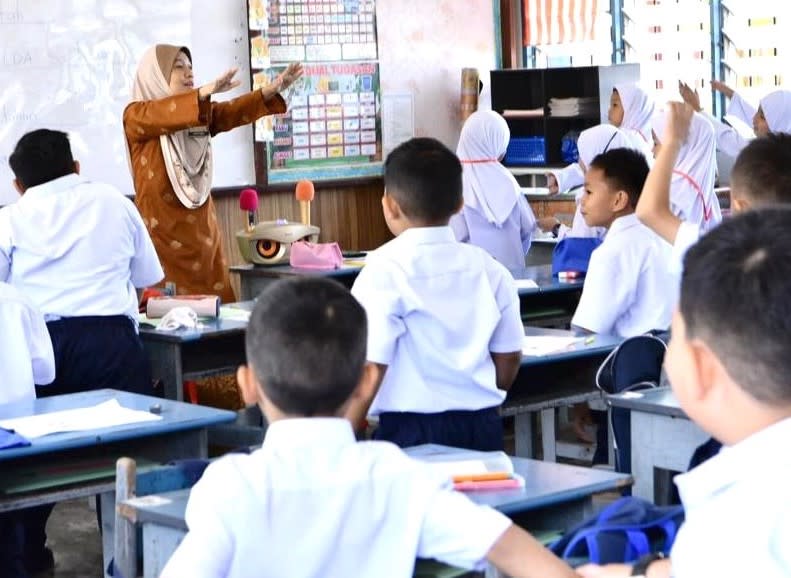‘National schools critical in fostering unity, national integration’

The recent statement by Umno Youth on vernacular schools, and Professor Emeritus Datuk Dr Teo Kok Seng’s assertions that the vernacular school system causes disunity among the population, have created the impression that vernacular schools are superior to national schools.
This is with respect to the curricular/co-curricular educative process and serious parental engagement. It is also based on the notion that teachers in vernacular schools are dedicated and better qualified to engage with their students as they have an excellent work culture.
Supporters of vernacular schools flaunt the fact that these schools have a superior pedagogical ecosystem, compared to national schools, especially with regard to the teaching and learning, and the student-teacher interactive process.
They also cite the increasing enrolment of Malays in Chinese vernacular schools as testimony of Malay parents’ approval of the superiority of Chinese vernacular schools in equipping their children with better opportunities and exposure that is lacking in national schools.
Such generalised assertions erroneously imply that the national schools’ teachers and teaching methods are of low quality, and contend that the engagement between the national schools and parent- teacher associations is at a low level. The intention is to paint a negative impression of national schools, and to shore up support for the vernacular school system.
To assume that vernacular schools are superior to national schools, and to cast aspersions on the teachers and administration of national schools, is unfair. Especially when it is done without empirical evidence.
In fact, there are excellent examples of national schools with dedicated teachers and pedagogical process.
Among those in the peninsula are the Penang Free School, Georgetown Secondary School, St George’s Girls School and Bukit Mertajam High School. Then there is Tunku Kurshiah College in Seremban, Victoria Institution, and Methodist Boys School in Kuala Lumpur, Sekolah Tuanku Abdul Rahman in Ipoh, Malay College Kuala Kangsar, and many others, including those in Sabah and Sarawak.
Yet, there are politicians, educationists, and activists who lament about the decline of quality in these premier schools. Before, such schools were grammar, or technical schools, with English as the medium of instruction. The best students from feeder schools (primary schools) were selected to continue their secondary education in these schools.
But today, these schools are Malay-medium national schools, with admissions based on geographical locations, and the intake of students from varying socio-economic backgrounds and attitudes. The varying qualities of students affected the performance of these schools.
Most vernacular schools are urban or semi-urban, attended for the most part by students from the middle class onwards, while national schools are spread out throughout the length and breadth of the country, including in the rural areas and the remotest recesses of this land, especially in Sabah and Sarawak and the Orang Asli settlements in Peninsula Malaysia.
Those in the rural areas cater mainly to students from the B40 families, some of whom are living below the poverty line, while students from the lower and middle income bracket attend the urban based ones.
These rural national schools lack basic facilities, like proper roads, internet connectivity, and sometimes, regular supply of electricity and water, not to mention teaching tools and other educational aids.
One must appreciate that teachers, especially in national schools, work under extremely adverse and challenging conditions, especially in rural areas, having only basic facilities, to teach students from variegated backgrounds and attitudes without the support of educational facilities found in urban areas.
Even in urban areas, students from B40 families may not have the financial means to avail themselves to the additional private educational facilities.
Due to the differences in geographical location, socio-economic and cultural factors, availability of school facilities, the teaching-learning process, and the nature of students, the performance of national schools vary according to the dictates of these markers.
As to the question of forging unity, the National Unity Minister Datuk Aaron Ago Dagang said that vernacular schools were not a factor in the polarisation. Rather, they are important in forging national unity.
National schools offer the best platform for integration, with Bahasa Melayu as the medium of instruction, and a diverse student population. But some Malaysian parents have abandoned national schools because they want to maintain the exclusivity of their linguistic cultural identities.
It is unfair and egregious on the part of vernacular school proponents to vilify national schools. Their accusations and assumptions are borne from chauvinistic sentiments.
National schools (including vocational schools) have academic, critical, and creative fortitude, with dedicated teachers sometimes working with limited resources, especially in the rural areas, to provide education for the masses.
National schools have a much wider agenda of not only educating the masses throughout the country, but also to foster unity and uphold and practise the tenets of the Rukun Negara towards a progressive, literate, and harmonious nation.
The views expressed here are the personal opinion of the writer and do not necessarily represent that of Twentytwo13.
The post ‘National schools critical in fostering unity, national integration’ appeared first on Twentytwo13.


